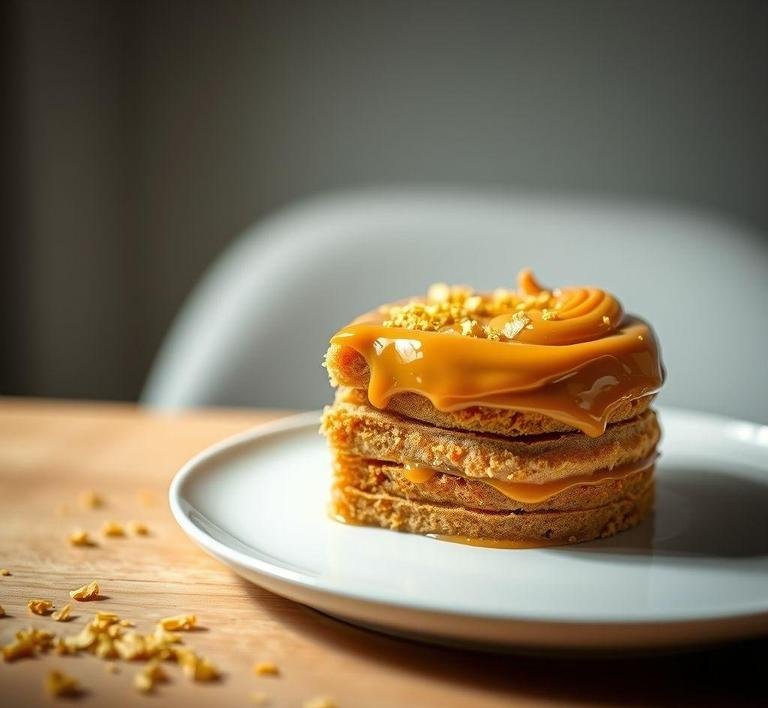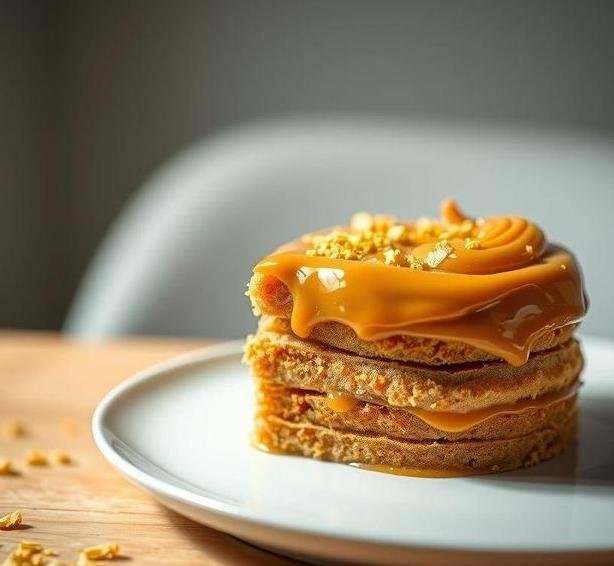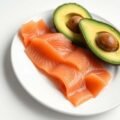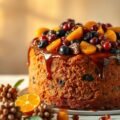Mary Berry’s Butterscotch Cake is a quintessential British dessert, known for its rich, indulgent flavor and delicate crumb. It’s a perfect example of the classic cakes that Mary Berry, a culinary icon, is renowned for-simple yet elegant, with a strong emphasis on traditional flavors. Butterscotch, with its deep, caramelized sweetness, takes center stage in this cake, complemented by a soft and light sponge that melts in your mouth. The cake is typically layered with a butterscotch-flavored frosting that intensifies the flavor profile, giving it a velvety texture and a sweet, buttery finish.
This cake embodies everything that makes Mary Berry’s baking so beloved: it’s comforting, flavorful, and approachable for bakers of all skill levels. Ideal for tea time, birthday celebrations, or a special afternoon treat, the Butterscotch Cake has an irresistibly rich flavor that isn’t overly sweet but is luxurious enough to feel like a special occasion dessert. The cake is balanced with just the right amount of sweetness, and the use of butterscotch not only adds a unique twist but also elevates it from the usual vanilla or chocolate cakes often found in British kitchens.
Mary Berry’s Butterscotch Cake Recipe
Ingredients Needed

To make Mary Berry’s Butterscotch Cake, you’ll need a mix of pantry staples and a few special ingredients that together create the magic of this indulgent treat. Here’s a breakdown of what you’ll need:
-
For The Cake
- Self-raising flour (225g): This is essential for giving the cake its light and fluffy texture. Self-raising flour contains baking powder, which helps the cake rise beautifully as it bakes.
- Caster sugar (225g): The fine texture of caster sugar helps create a smooth, even batter and ensures the cake remains tender.
- Unsalted butter (225g): Butter provides richness and moisture to the cake, contributing to its soft texture and flavor. Unsalted butter is preferred as it allows you to control the salt content.
- Large eggs (4): Eggs help bind the ingredients together and provide structure to the cake. They also contribute to the cake’s flavor and moisture.
- Full-fat milk (2 tbsp): The milk adds moisture to the batter, ensuring the cake is tender and not too dry.
- Vanilla extract (1 tsp): Vanilla adds a warm, aromatic note that complements the butterscotch flavor.
-
For The Butterscotch Filling And Frosting
- Light brown sugar (200g): This sugar is key to achieving the rich, caramelized flavor that makes the cake “butterscotch”. The slight molasses flavor in the brown sugar gives the cake a deeper, more complex taste.
- Double cream (200ml): Double cream (also known as heavy cream in some places) is used for its rich texture and ability to create a smooth, luscious frosting.
- Unsalted butter (50g): A little extra butter is added to the frosting to enhance the creaminess and give it a velvety finish.
- Golden syrup (2 tbsp): A classic British ingredient, golden syrup adds a subtle, buttery sweetness to the frosting and enhances the butterscotch flavor.
- Powdered sugar (300g): Powdered sugar is used to thicken the frosting and give it the right consistency to spread smoothly across the cake.
Equipment Needed
Making Mary Berry’s Butterscotch Cake requires a few essential pieces of baking equipment to ensure success. These tools will help you achieve the right texture, consistency, and presentation:
- Two 20cm round cake pans: These are used to bake the layers of the cake. You’ll want to grease them and line them with baking parchment to ensure the cake doesn’t stick and comes out cleanly.
- Mixing bowls: A couple of large mixing bowls are necessary for combining the dry and wet ingredients separately before bringing them together. You’ll also need one for the frosting.
- Electric hand mixer or stand mixer: While you can mix the cake batter by hand, using an electric mixer helps ensure the batter is smooth and well-blended, giving the cake a light texture.
- Measuring cups and spoons: Accurate measurements are key to successful baking, so you’ll need a good set of measuring cups and spoons.
- Spatula or palette knife: This is useful for spreading the frosting evenly across the layers of the cake.
- Cooling rack: After baking, the cake layers should be cooled on a rack to prevent them from becoming soggy.
- Saucepan: You’ll need a small saucepan to melt the butterscotch ingredients together before combining them into the frosting.
Instructions To Make Mary Berry’s Butterscotch Cake
Now that you have your ingredients and equipment ready, it’s time to dive into the step-by-step process to make this delectable cake. Follow these instructions carefully, and you’ll be rewarded with a perfectly baked, moist butterscotch cake:
- Preheat the Oven: Set your oven to 180°C (160°C for fan ovens) or 350°F. Grease and line two 20cm round cake pans with baking parchment.
- Prepare the Cake Batter: In a large mixing bowl, cream together the butter and caster sugar until light and fluffy. This will take about 3-4 minutes with an electric mixer. Add the eggs one at a time, beating well after each addition to prevent curdling. Sift the self-raising flour into the mixture and fold it in gently using a spatula. Add the vanilla extract and milk, then stir until fully combined.
- Bake the Cake Layers: Divide the batter evenly between the two prepared cake pans. Smooth the tops with a spatula, and bake in the preheated oven for 20-25 minutes, or until a skewer inserted into the center of the cakes comes out clean. Once baked, remove the cakes from the oven and allow them to cool in the pans for 10 minutes. Then transfer the cakes onto a cooling rack to cool completely.
- Make the Butterscotch Frosting: In a small saucepan, combine the light brown sugar, butter, and golden syrup. Heat gently, stirring continuously until the sugar has dissolved and the mixture begins to bubble. Allow it to simmer for 2-3 minutes until it thickens slightly. Remove from the heat and let it cool for a few minutes before adding the double cream. Stir until smooth.
- Assemble the Cake: Once the cakes have cooled completely, spread a generous amount of the butterscotch frosting on top of one of the cake layers. Place the second layer on top and spread the remaining frosting over the top and sides of the cake. Smooth the frosting with a spatula, and if you’d like, decorate the top with a drizzle of additional butterscotch sauce or some crushed nuts for texture.
- Serve and Enjoy: Allow the cake to set for about 30 minutes to firm up the frosting slightly. Then slice, serve, and enjoy the decadence of this perfectly balanced butterscotch cake.
Tips And Tricks
To ensure your Butterscotch Cake turns out perfectly every time, here are some helpful tips and tricks:
- Room Temperature Ingredients: Make sure the butter, eggs, and milk are all at room temperature before starting. This helps the ingredients combine more easily and results in a smoother batter.
- Don’t Overmix: Overmixing the cake batter can cause the cake to become dense. Fold in the flour gently until just combined.
- Check for Doneness: Every oven is different, so keep an eye on the cake. Start checking for doneness a few minutes before the recipe’s suggested time to ensure it doesn’t overbake.
- Butterscotch Flavor Boost: If you want to intensify the butterscotch flavor, try adding a pinch of sea salt to the frosting or incorporating some butterscotch chips into the cake batter for extra bursts of flavor.
- Storage: The cake keeps well for 3-4 days when stored in an airtight container at room temperature. You can also freeze it for up to a month if you want to prepare it ahead of time.
Mary Berry’s Butterscotch Cake is a stunningly delicious dessert that brings together the warmth of British baking with the comforting richness of butterscotch. It’s a showstopper for any occasion, whether you’re hosting a party, enjoying an afternoon tea, or simply treating yourself to a slice of something special. The beauty of this cake lies in its simplicity and the balance of flavors-it’s not overly sweet but full of depth, with the buttery richness of the frosting perfectly complementing the light and airy sponge. With just a few basic ingredients and a little care in the preparation, you can create this delectable cake and impress family and friends alike. So, grab your apron, and enjoy baking this Mary Berry classic-there’s nothing quite like a slice of homemade butterscotch cake!
Easy Recipe Variations For Mary Berry’s Butterscotch Cake

Mary Berry’s Butterscotch Cake is already a beloved dessert, cherished for its rich, buttery flavor and moist, tender crumb. But what if you want to elevate this classic or introduce a twist to suit different tastes or occasions? Here are a few easy recipe variations to breathe new life into the cake while retaining its essence.
-
Butterscotch and Banana Cake
Add a tropical element to your cake by incorporating ripe bananas. They’ll bring an additional layer of moisture and a subtle sweetness that complements the butterscotch flavor. Mash one or two bananas and fold them into the batter before baking. You can also create a simple banana butterscotch topping by simmering mashed bananas with butter, brown sugar, and a pinch of cinnamon to drizzle over the cake.
-
Salted Butterscotch Cake
If you love the contrast between sweet and salty flavors, try adding a sprinkle of flaky sea salt to the cake. Once the cake has cooled, drizzle it with a homemade salted butterscotch sauce, which can be made by adding a pinch of sea salt to the traditional butterscotch syrup. This gives a sophisticated depth to the cake, balancing the sweetness with a savory edge.
-
Butterscotch and Pecan Cake
For a nutty twist, toast a handful of pecans and fold them into the batter for added texture and flavor. The nutty richness of pecans pairs beautifully with the butterscotch, creating a more complex and hearty cake. You could also sprinkle chopped pecans on top along with the butterscotch sauce for an extra crunchy contrast.
-
Vegan Butterscotch Cake
To make this cake plant-based, swap out the dairy ingredients with vegan alternatives. Use coconut oil or margarine in place of butter, and almond milk or oat milk instead of regular milk. For the egg replacement, a flaxseed egg or a chia egg works wonders in this recipe. The result? A vegan butterscotch cake that still delivers on the rich, caramelized flavor, perfect for those avoiding animal products.
-
Butterscotch and Chocolate Cake
Chocolate and butterscotch are a match made in heaven. You can add some chopped dark chocolate or chocolate chips to the batter for a more decadent version of this cake. To really emphasize the chocolate-butterscotch combo, drizzle melted chocolate over the cake once it’s cooled, creating a beautiful marbled effect on top.
-
Butterscotch Spice Cake
If you want to introduce warm, spicy flavors into your butterscotch cake, simply add ground cinnamon, ginger, and nutmeg to the batter. The earthy spices will add depth and complexity to the sweetness of the butterscotch. This variation is perfect for the colder months or for a festive occasion like Thanksgiving or Christmas.
-
Butterscotch Coffee Cake
To turn this into a coffee cake, mix a bit of instant coffee or espresso powder into the butterscotch batter. The rich coffee flavor enhances the caramelized taste of the butterscotch, creating a perfect pairing for your morning cup of coffee or tea. Adding a streusel topping made of brown sugar, butter, and cinnamon would turn this into an irresistible treat.
Storing Leftovers
Mary Berry’s Butterscotch Cake is a delightful treat, but if you happen to have any leftovers (which, let’s be honest, is a bit of a rarity), it’s important to store it properly to maintain its freshness and moisture. Here’s how you can store your leftover butterscotch cake for optimal flavor and texture.
-
Room Temperature Storage (1-2 Days)
If you plan to eat the leftovers within a day or two, storing the cake at room temperature is perfectly fine. Wrap the cake in plastic wrap or place it in an airtight container to prevent it from drying out. For added protection, you could also use a cake dome to keep it fresh. Keep the cake in a cool, dry place away from direct sunlight or heat sources.
-
Refrigeration (Up to 5 Days)
For longer storage, you’ll need to refrigerate the cake. Wrap it tightly in plastic wrap or place it in an airtight container to prevent it from absorbing any odors in the fridge. Although refrigeration can cause the cake to lose some of its moistness, the butterscotch flavor will still remain delicious. Just make sure to bring it back to room temperature for the best taste and texture before serving.
-
Freezing (Up to 3 Months)
If you want to store the cake for an extended period, freezing is your best bet. To freeze, slice the cake into individual portions (if you prefer) and wrap each slice tightly in plastic wrap, followed by aluminum foil to ensure no air can get in. Place the wrapped slices in a resealable freezer bag or an airtight container. When you’re ready to enjoy the cake, let it thaw in the refrigerator overnight, or you can even reheat it in the microwave for a few seconds for that fresh-out-of-the-oven feel.
-
Storage Tips for Frosted Cake
If you’ve already frosted the cake with butterscotch icing or any other toppings, store it as carefully as possible to preserve the frosting’s texture. If the frosting is not too delicate, you can refrigerate the entire cake. But if the frosting is prone to becoming hard or losing its smooth consistency (like whipped cream-based toppings), you might want to store it unfrosted and frost it right before serving.
What To Eat With Mary Berry’s Butterscotch Cake?
While Mary Berry’s Butterscotch Cake is delicious on its own, pairing it with complementary foods can elevate your dessert experience to new heights. Whether you’re serving it for a special occasion or enjoying it with a cup of tea, here are some ideas for what to eat with this rich, sweet cake.
-
Fresh Cream or Whipped Cream
A dollop of lightly sweetened fresh cream or whipped cream is the perfect accompaniment to the butterscotch cake. The creaminess balances out the rich sweetness of the cake, while also adding a smooth texture that complements the soft crumb. You could even flavor the cream with a splash of vanilla extract or a hint of cinnamon for a twist.
-
Vanilla Ice Cream
The cold, creamy nature of vanilla ice cream makes it an ideal contrast to the warm, gooey layers of butterscotch cake. For a more decadent experience, you can even drizzle some hot butterscotch sauce over the ice cream, creating a luscious, indulgent dessert duo.
-
Caramelized Apples
A serving of warm caramelized apples pairs beautifully with the butterscotch cake. The slightly tart apples, cooked with butter and brown sugar, provide a fruity yet rich contrast that complements the caramelized flavors in the cake. This combination is especially perfect during fall or winter months.
-
Coffee or Tea
A hot cup of coffee or tea can be the ideal beverage pairing. The bitterness of the coffee or the subtle notes of herbal tea balance the cake’s sweetness. For a fun variation, pair the cake with a flavored coffee such as a caramel macchiato or a chai latte to emphasize the butterscotch and spice elements of the cake.
-
Berries and Fruit Compote
Fresh berries like raspberries, strawberries, or blackberries can add a burst of freshness and a slight tang to the richness of the cake. If you want to add more depth, you could make a quick fruit compote by simmering mixed berries with a touch of sugar and lemon juice until it thickens into a syrupy sauce. This would work wonderfully as a topping for the cake.
Conclusion
Mary Berry’s Butterscotch Cake is a timeless classic that can be easily adapted to suit a variety of tastes and occasions. With just a few tweaks, you can introduce exciting new flavors, from banana and pecan additions to vegan or salted variations. And if you happen to have leftovers, you can store them for several days or even freeze them to enjoy at a later time. Whether you’re serving it with whipped cream, ice cream, or a hot cup of tea, the cake is versatile enough to be paired with a range of delicious accompaniments. In the end, this cake isn’t just about satisfying your sweet tooth-it’s about creating an experience that’s rich, comforting, and utterly enjoyable from the first bite to the last crumb.
FAQs
What Ingredients Are Needed For Mary Berry’s Butterscotch Cake?
Mary Berry’s butterscotch cake requires simple ingredients such as self-raising flour, caster sugar, butter, eggs, golden syrup, and butterscotch flavoring. You will also need a pinch of salt, baking powder, and a splash of milk to ensure a light and fluffy texture. For the butterscotch sauce, you’ll need dark brown sugar, butter, and double cream to create a rich and indulgent topping.
How Do You Make The Butterscotch Sauce For Mary Berry’s Cake?
To make the butterscotch sauce, melt butter and dark brown sugar in a saucepan over low heat. Once melted, bring it to a simmer for a couple of minutes to allow the sugar to fully dissolve and the sauce to thicken. Then, stir in double cream and continue to simmer for a few more minutes until the sauce is smooth and glossy. Remove from the heat and let it cool slightly before drizzling it over the cooled cake.
Can I Substitute Any Ingredients In Mary Berry’s Butterscotch Cake Recipe?
Yes, you can make a few substitutions in Mary Berry’s butterscotch cake recipe. For example, if you don’t have self-raising flour, you can use plain flour and add baking powder to achieve the same rise. If you want a dairy-free version, you can replace the butter with a plant-based alternative and use a dairy-free cream for the butterscotch sauce. Additionally, if you can’t find butterscotch flavoring, you can use caramel or toffee flavoring for a similar taste.


